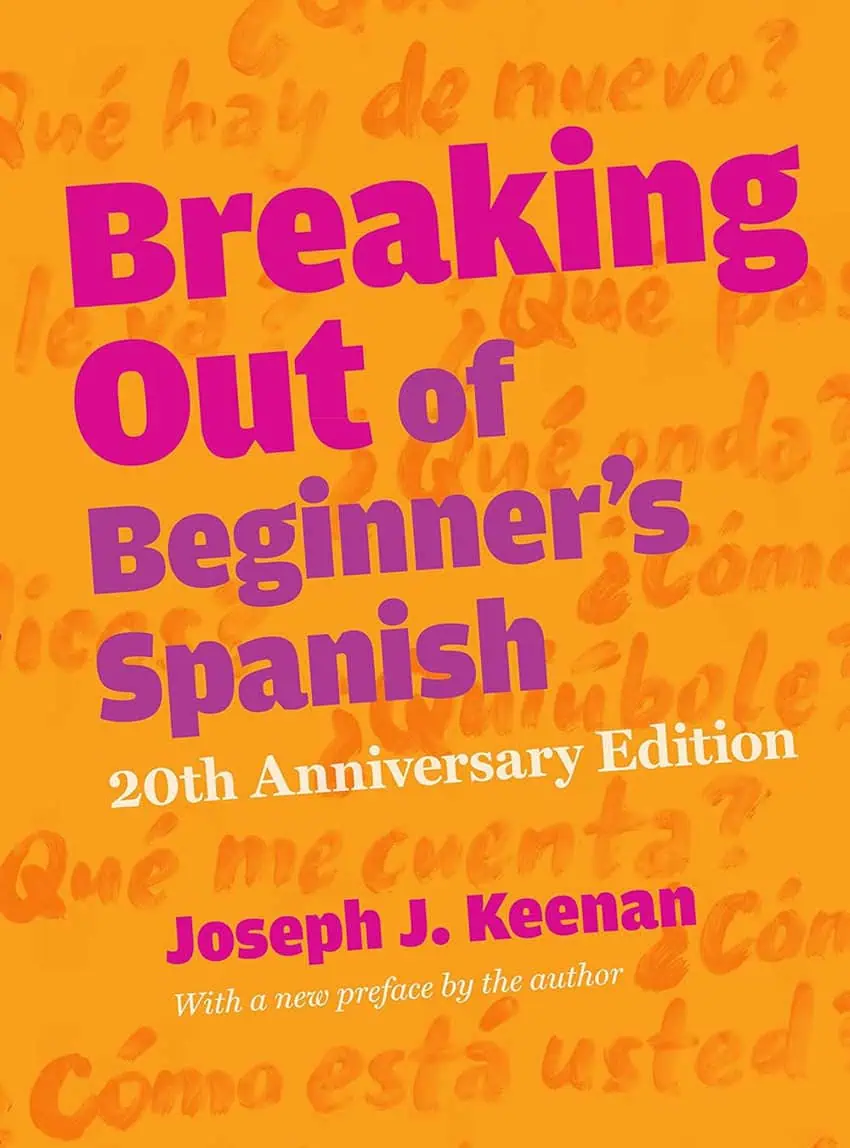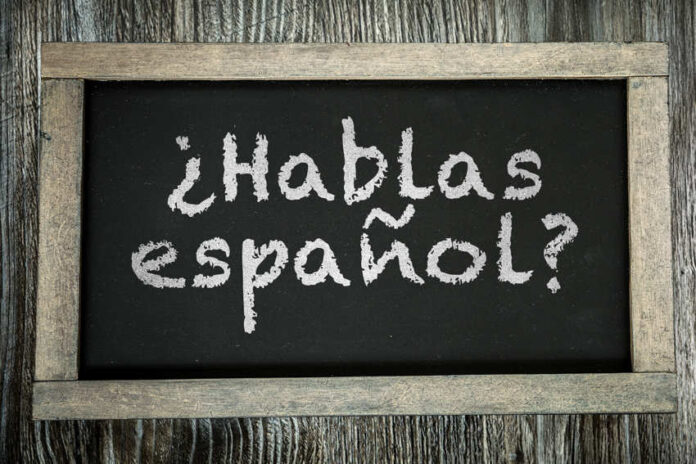When my husband Barry and I first visited Guanajuato in 1999, we read an entertaining book called “How to Break Through Beginners’ Spanish” by Joseph Keenan. At the time, I spoke Spanish at an advanced beginner level, and the book was invaluable in helping me learn how to sound more conversational than I really was. That, in turn, gave me the confidence to persevere. Today, I’m fluent.
That book is just as relevant today — and, best of all, it’s a fun read. Borrowing from Keenan’s theme, here are some words and phrases that not only will help you sound convincing in Spanish but that are easy to learn and will build your confidence.

Starter phrases that give you time to think
When beginning to speak in Spanish, it’s helpful to take a moment to collect your thoughts. These “starter” words and idioms offer that opportunity.
Pues: This is the English word “well” when it is used to express hesitation or uncertainty. Mexicans often use “pues” as an opening response to stall for time when they’re not sure what to say.
So, for example, “Pues, no estoy seguro” means “Well, I’m not sure.”
Entonces: Similar to “pues,” this connecting word is used the way in English we use “so” or “then.”
For example, “Entonces, ¿qué vamos a hacer?” is “So, what are we going to do?”

A ver: “Let’s see.”
So, for example, “A ver, voy a ver si puedo cambiar mi horario” means “Let’s see, I’m going to see if I can change my schedule.”
Es que or Lo que pasa es que: “The thing is…”
So, for example, if someone asks you “¿Por qué no quieres ir a la playa?” (“Why don’t you want to go to the beach?”) you can answer, “Es que tengo que trabajar” or ”Lo que pasa es que tengo que trabajar.” These both mean “The thing is, I have to work.”
Fíjate or fíjate que: “Look” or “Pay attention” A word for emphasis that means “to look” or “to pay attention to.”
My neighbor starts just about every sentence with this! “Fíjate que no puedo comer cacahuates porque soy alérgico,” which means, “Look, I can’t eat peanuts because I’m allergic to them.” Or, “Fíjate, no puedo ir a la fiesta porque voy a estar ocupada” means “Look, I can’t go to the party because I’m busy.”
¿Qué onda? and ¿Qué tal?: “What’s up?” or “How’s it going?”
As in English, note that these two phrases are fine for everyday interactions, but they’re pretty casual, so you might not want to use them in formal situations.
Mira and Oye: “Hey, look,” and “Hey, listen.”
These two are meant to get someone’s attention. So, for example: “Oye, la pelicula empieza a las 7:20, no a las 7:45” means “Hey, listen, the movie starts at 7:20, not 7:45.”

Filler words: Not just for native speakers!
Este: This is Mexico’s “um.” Not that I recommend using a crutch word, but if you’re going to use one, better the Spanish version!
So, for example, “Este…no sé qué pasó con tu cartera” means “Um…I’m not sure what happened to your wallet.”
Es decir: “That is” or “that is to say.”
For example, “Voy a ir a la fiesta, es decir, al menos que mi hermana tenga otra crisis” means “I’m going to the party — that is, unless my sister has another crisis.”
O sea: “In other words.” Just like in English, it rephrases or clarifies a point.
So, for example, “No puedo ir al concierto, o sea, tengo que vender mi boleto” means “I can’t go to the concert; in other words, I have to sell my ticket.”
Como: “Like.” Used similarly to English.
So, for example, “Es como una fusión de japonés y mexicana” means “It’s like a fusion of Japanese and Mexican.”
Bueno: “Good” or “O.K.” This word is sometimes used to softly direct a change in the conversation or to start a new thought.
For example, “Bueno, hablando de eso” means “O.K., speaking of that…”
“Bueno” is also used when answering the phone, which surprises English speakers, who assume the response would be “hola.”
Phrases to respond to what someone is saying

Órale: “O.K.,” “right, “sure,” or “Let’s go!” It’s a word that can express agreement or excitement. I’ll never forget our Mexican architect talking on the phone. Every response he offered was “orale.” For example, “¡Órale, vamos a la playa!” means “Sure, let’s go to the beach!”
Así es: “Yes, that’s right.” A phrase used to acknowledge that something is true. “La biblioteca está en el centro?” “Así es.”
The meaning of “así es” can depend on the context. In some cases, it might mean instead, “That’s the way it is,” or, philosophically, “Así es la vida” — “that’s life.”
¿En serio?: “Really?” or “Seriously?” A simple phrase expressing surprise or asking for confirmation about something someone just said.
No te preocupes: “Don’t worry about it.”
Phrases to express surprise, delight and more

¡Hijole!: “Wow!” Or “Oh no!”
The aforementioned “orale” can also be used this way to express impressed surprise.
¡No me digas!: A direct translation of “You don’t say!” that expresses surprise and disbelief at unexpected news.
¡Qué padre! or Qué chido!: “Awesome!” or “Cool!” Be aware, though, “chido” is more of a younger generational term. Think millennials and Gen Z.
Ni modo: “Oh well” or “Whatever.” A way of expressing acceptance or resignation. For example, if you miss the bus, you might say, “Ni modo, ya se fue” (“Oh well, it already left.”)
Ándale: “Come on!” or “Hurry up!” depending on context. It can also be used to encourage someone to keep going, like if you’re watching competitive cyclists and want to say something supportive to cheer them on.
Saying goodbye

Nos vemos: “See you around.” As in English, you can use this if there’s an expectation that you’ll see the person again.
Qué te vaya bien: Literally, “I hope things go well for you,” but frequently used as a positive way of leave-taking. “Qué le vaya bien” is the usted version.
Cuidate or Cuidese: A command to take care of yourself, but it is a warm way to say goodbye. The first form is used for people with whom you would use “tu.” The second form is the “usted” conjugation.
¡Suerte!: This is the word “luck,” but it means “good luck.”
A few other miscellaneous terms
¿Mande?: “Excuse me?” Or “Perdón?” This is a polite way of asking someone to repeat themselves. Saying “¿Qué?” (What?) for this purpose can be considered abrupt and slightly rude by some Mexicans.
No hay de qué and con gusto: These both mean “you’re welcome” and are alternatives to the more familiar “de nada.” Mexicans will also sometimes shorten “no hay de que” to just “de que.” The first has the feel of “Oh, it was nothing,” and the second is more like “My pleasure.”
Aguas!: “Careful!” or “Watch out!”
So, as you can see, many of these examples are simple one or two-word phrases, easily interjected here and there in any conversation. Getting into the habit of using some when you’re chatting will not only build your confidence but also help you relax and have fun, which is the whole point of living in Mexico for most of us, ¿órale?
Louisa Rogers and her husband Barry Evans divide their lives between Guanajuato and Eureka, on California’s North Coast. Louisa writes articles and essays about expat life, Mexico, travel, physical and psychological health, retirement and spirituality. Her recent articles are available on her website, authory.com/LouisaRogers
